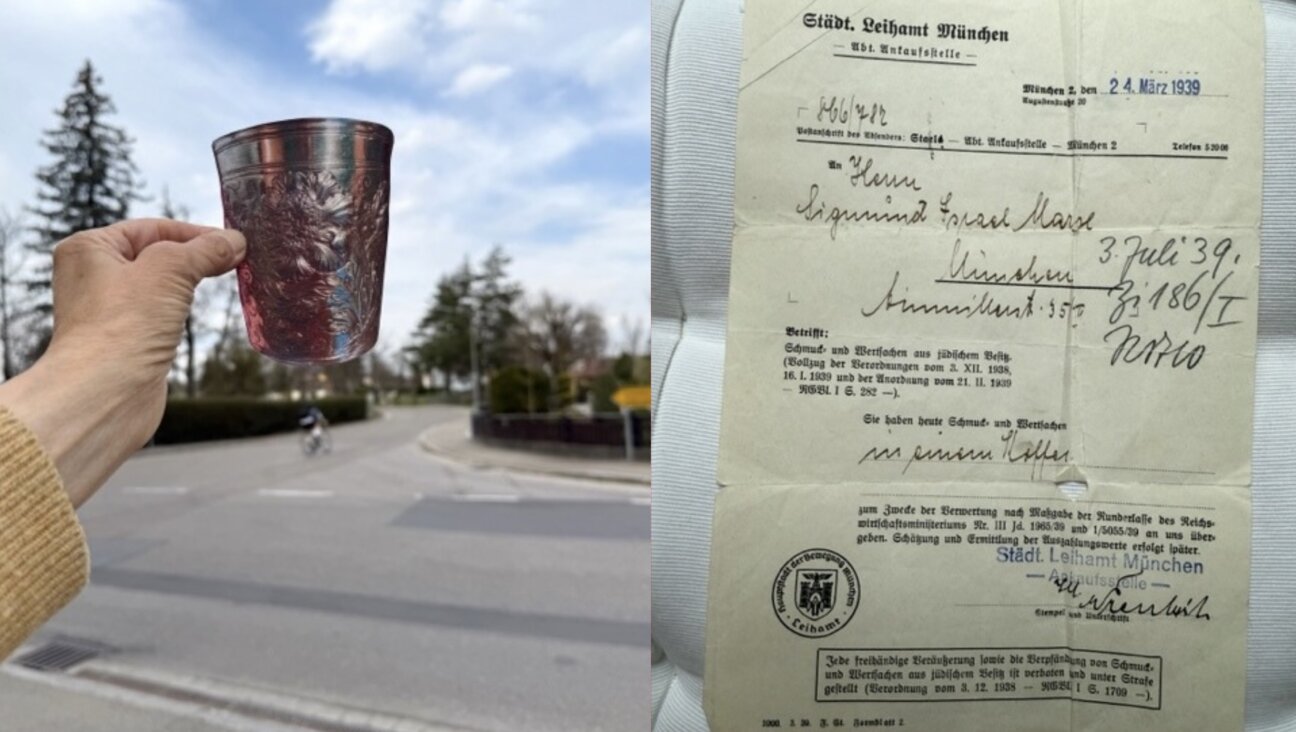Bismarck’s Bayonets

Bismarck: A Life, By Jonathan Steinberg
Bismarck: A Life
By Jonathan Steinberg
Oxford University Press, 592 pages, $34.95
Otto von Bismarck once said, “You can do anything with bayonets except sit on them.”
By making Bismarck prime minister of Prussia in 1862, the Prussian monarch, King Wilhelm (William) I, was rolling the dice. Wilhelm was facing a constitutional crisis after the Prussian Parliament rejected his key legislative initiatives. Rather than abdicate, the king called upon Bismarck, then 47, an aristocrat reviled by liberals and abominated by conservatives of his own class, to save the day. Few expected Bismarck to last the year.

Bismarck: A tyro at Prussia?s helm. Image by Getty Images
Nine years and three wars later, France had been defeated in a watershed conflict, and a Prussian-dominated German nation-state had been established, with Wilhelm I as its emperor. From the right and from the left Bismarck’s political genius was trumpeted, and he remained in power — albeit sometimes hanging by a thread — for two more decades.
Bismarck did not sit on his bayonet.
The Bismarck story is an oft-told one, and oft-told with a political or social agenda guiding the biographer’s pen. Otto Pflanze’s magisterial 1990 three-volume work set a new standard for Bismarck biographies and, more recently, Edgar Feuchtwanger’s “Imperial Germany 1850–1918” (Routledge, 2001) moved us beyond the standard Bismarck mythology. Jonathan Steinberg’s “Bismarck: A Life” fits neatly into this estimable body of work as a serious, politically detached, study.
In doing so, Steinberg, the University of Pennsylvania’s Walter H. Annenberg professor of modern European history, parts company with those German historians of the early 20th century who all too often permitted their political views to influence their portraits. Their work informed the classic Bismarckian image — the “world historical leader” — that emerged during the Weimar and Nazi periods. Steinberg’s analysis achieves a degree of personal and political objectivity while avoiding an oversimplification of his political and governmental achievements.
Who was Bismarck? Steinberg neatly (and readably) walks the reader through Bismarck’s rather outsized life, beginning with the unhappy child and ending with the raging old man. Along the way, we meet the independent-minded student, whose independence manifested itself in manifold ways throughout his tenure; the bored government bureaucrat; the aristocratic estate-holder, and the political tyro, who, elected to the United Diet of the Kingdom of Prussia in 1847, suddenly found the perfect vehicle for his stupendous energy and intelligence. Bismarck was a man of large appetites, for food, tobacco, women — and especially for political power. And he was canny: His developmental period politically, in the 1850s, was as a Prussian diplomat who cleverly distanced himself from the conventional conservative orthodoxy he had expressed as a hard-liner during the wave of revolutions in 1848 Europe. Bismarck knew how to dance the political dance.

Bismarck: A Life, By Jonathan Steinberg
The core of Steinberg’s thoughtful book is the section that describes the path to German unification, and it is in this section that the author’s thesis is expressed. Steinberg notes again and again that von Bismarck had no natural power base, neither in political party nor in bureaucracy — and certainly not at court. His political ascent came from what Steinberg calls “sovereign will,” the ability to use personal magnetism to bind those around him to his policies. Steinberg argues the case that Bismarck was more than just the first “professional politician,” as other historians have asserted; there was more to Bismarck than the supremely able technocrat. Steinberg gets it right, but the reader of “Bismarck: A Life” yearns for more context, more about the political institutions in Germany, more about the social forces in Germany and in Europe in general.
One arena of social history in which Steinberg does excel is Bismarck’s anti-Semitism. Anti-Semitism, top to bottom, was pervasive in Germany in the 19th century. But not many historians have addressed in detail this aspect of Bismarck’s life. His anti-Semitism was of a piece with that of 19th-century Germany, which in turn was part of the new wave of racist European anti-Semitism — a new variety of the ancient hatred. Jonathan Steinberg does a nice job reporting on and analyzing Bismarck’s anti-Semitism, and he pulls no punches in his discussion of the breadth and depth of Bismarck’s prejudices.
But here, as well, context is missing, a context of the hijacking by Jew haters of the emerging sciences of biology and anthropology, which transformed Christian religious anti-Judaism to racialist anti-Semitism. But there was more: There was a discrete German context as well, a dynamic deeply positioned in German history and literature. It was the notion of, and yearning for, a German Volk — a people that represented the ancient Teutonic spirit, an organic entity in which the Jew could not participate. The rationalism of the 18th and 19th centuries led to distinctions between “races,” with Jews being characterized as a “race,” and an inferior one at that. The German Volk was, of course, at the very top of the racialist totem-pole. A brief discussion of this sociological dimension would have been useful, and it is missing in Steinberg’s otherwise astute analysis.
Having said this, Steinberg deftly traces anti-Semitism’s roots in Germany’s gutter, and shows how, with the help of respected contemporary historians and theologians, it reached the heights of the establishment, including the highest aristocracy and the court itself. This is an important subtext of the book, and Steinberg shows how anti-Semitism was cynically used by Bismarck and others as a vehicle to attain political ends.
Steinberg is clearly no fan of Bismarck’s character — not a nice guy, to be sure. But his purpose is neither to praise nor vilify the statesman. Rather, he aims to understand and explain Bismarck’s profound success story: his brilliant strategies and tactics in bringing together the German states into a unified polity. In this, “Bismarck: A Life” is a success story itself.
Jerome A. Chanes is a Forward contributing editor and editor of the forthcoming “The Future of American Judaism” (Trinity/Columbia University Press).
The Forward is free to read, but it isn’t free to produce

I hope you appreciated this article. Before you go, I’d like to ask you to please support the Forward.
Now more than ever, American Jews need independent news they can trust, with reporting driven by truth, not ideology. We serve you, not any ideological agenda.
At a time when other newsrooms are closing or cutting back, the Forward has removed its paywall and invested additional resources to report on the ground from Israel and around the U.S. on the impact of the war, rising antisemitism and polarized discourse.
This is a great time to support independent Jewish journalism you rely on. Make a gift today!
— Rachel Fishman Feddersen, Publisher and CEO
Support our mission to tell the Jewish story fully and fairly.
Most Popular
- 1

Opinion The dangerous Nazi legend behind Trump’s ruthless grab for power
- 2

Opinion A Holocaust perpetrator was just celebrated on US soil. I think I know why no one objected.
- 3

Culture Did this Jewish literary titan have the right idea about Harry Potter and J.K. Rowling after all?
- 4

Opinion I first met Netanyahu in 1988. Here’s how he became the most destructive leader in Israel’s history.
In Case You Missed It
-

Opinion Gaza and Trump have left the Jewish community at war with itself — and me with a bad case of alienation
-

Fast Forward Trump administration restores student visas, but impact on pro-Palestinian protesters is unclear
-

Fast Forward Deborah Lipstadt says Trump’s campus antisemitism crackdown has ‘gone way too far’
-

Fast Forward 5 Jewish senators accuse Trump of using antisemitism as ‘guise’ to attack universities
-
Shop the Forward Store
100% of profits support our journalism
Republish This Story
Please read before republishing
We’re happy to make this story available to republish for free, unless it originated with JTA, Haaretz or another publication (as indicated on the article) and as long as you follow our guidelines.
You must comply with the following:
- Credit the Forward
- Retain our pixel
- Preserve our canonical link in Google search
- Add a noindex tag in Google search
See our full guidelines for more information, and this guide for detail about canonical URLs.
To republish, copy the HTML by clicking on the yellow button to the right; it includes our tracking pixel, all paragraph styles and hyperlinks, the author byline and credit to the Forward. It does not include images; to avoid copyright violations, you must add them manually, following our guidelines. Please email us at [email protected], subject line “republish,” with any questions or to let us know what stories you’re picking up.















